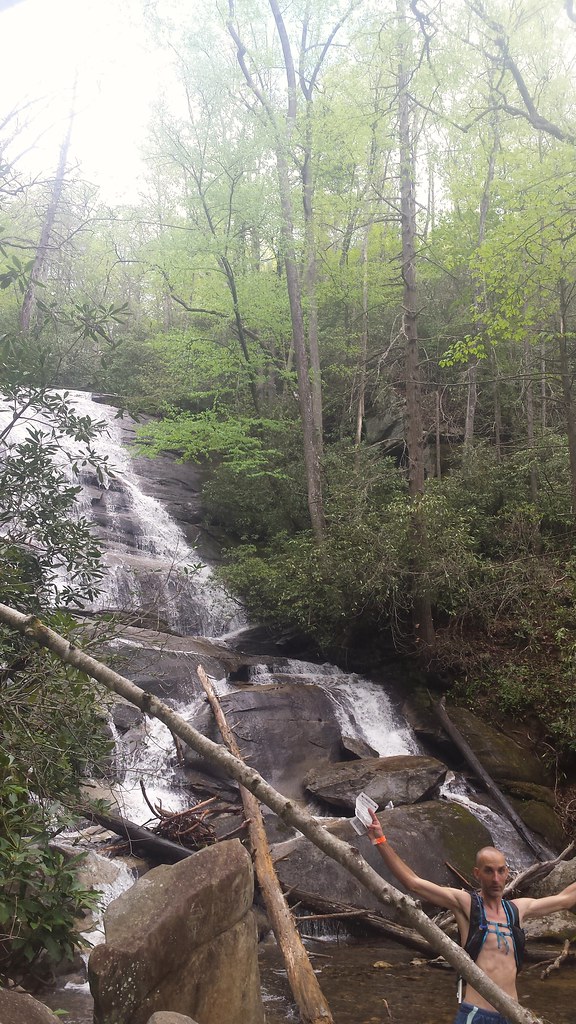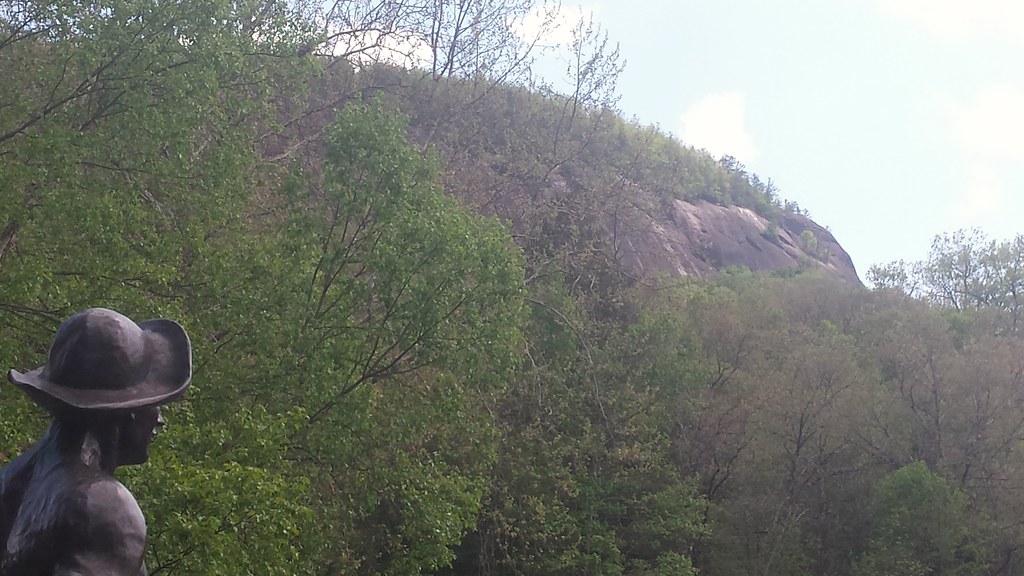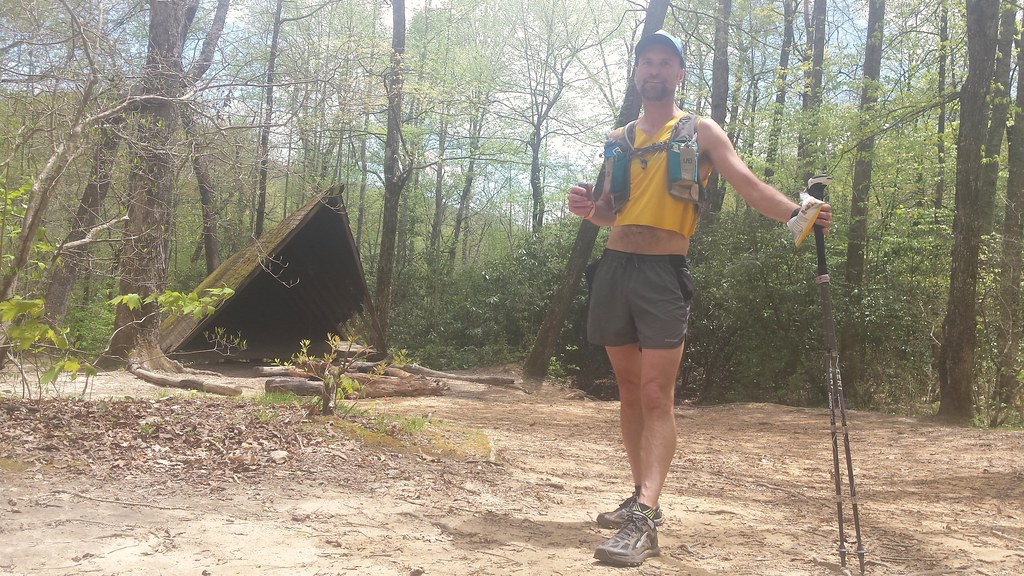After getting a wooden nickel of sorts at the start of PMBAR the day before I knew surprises were in the air for PRAR once again. After riding 65 miles with 11000' of climbing the day before I felt shockingly good at the start of the running race. Eric gave his speech and then we got our passports. I took a quick scan and then we headed up towards the Black Mountain trail. With two checkpoints in the Avery Creek area and three over by the Fish Hatchery we thought we would start with Black and finish with the Art Loeb but as we read the passport while we ran we realized nothing was off limits. Usually, most roads, especially highway 276, cannot be used in the race but this is a race where you should never assume anything and this year our surprise was that the roads were open.
With that in mind, we quickly turned around and headed up highway 276. Our potential mistake would have made us add miles as well as 1700' of unnecessary climbing! This year was to be the road year and by the time we turned right onto Buckhorn Gap trail three miles into the race I had already run more pavement and gravel than I had all year. It was going to be a long and somewhat flat day. Our first checkpoint took us a couple of minutes to locate and then at the second one came easy enough but the timing equipment was missing from it. I sent a quick text to Eric the race director and assured the racers we would get credit for being there. Smiles abounded with everyone enjoying the race.
Another unique aspect of the race is that it is a team event, not an individual race. Teams of two must stay together and reach the checkpoints as a team. That adds to the communal aspect of the race and also ensures runners' safety. It also means you get to know other teams as you try and decipher your own way to the checkpoints and back to the finish. You will see a team and run with them for a bit and then one team will take a different route and you will find yourselves leapfrogging with another team and all the while you'll see teams taking completely different routes and directions. That makes it challenging to know exactly where you stand in the race but PRAR really isn't the type of race that is about the finish - it is more about the journey to get to that destination.
Our journey had us going back out to the highway after checkpoint #2 and then over to the Fish Hatchery and Cove Creek Falls for CP#3.

Leaving the checkpoint we met a co-ed team who had made the mistake of assuming the road would be faster than the Davidson River trail and then made a second mistake of taking a fisherman's trail instead of Davidson River trail despite my warnings. The game was afoot!
Back the Fish Hatchery where we stopped to make use of clean water as well as the vending machines (pro-tip: carry some dollar bills) before heading up to John Rock where our mandatory CP awaited.

The road part of the day was over and from the Fish Hatchery on we would be on good old Pisgah single track. John Rock came easy enough and then it was out and back on the Art Loeb to CP#5 at Butter Gap. This would be the crux of the race. The extra checkpoint meant a two hour time bonus but getting to it and back would be very close to two hours on the slow stretch of the Art Loeb where it wraps around Butter Gap. We hit the marathon mark for the day just about at the checkpoint and celebrated our personal success of the weekend with a little moonshine.

It was essentially all Downhill From There (except where it wasn't, of course) and when we got back to Cat Gap it had taken us 1:40 to get the extra CP so our work meant twenty free minutes. The return trip on the Art Loeb was perfect. The weather couldn't have been better and it was as if we had the entire forest to ourselves - the perfect end to yet another perfect Pisgah weekend. All the miles and mountains from the weekend were making us feel it but neither of us had any sort of issues - just the sort of fatigue you would expect from almost 100 miles, 18,000' of climbing and 18.5 hours of Pisgah.
Back at the finish cold beer, burritos and smiles abounded with all the racers eager to share their stories from the trail. We finished in eight and a half hours after running 33 miles and climbing nearly 6,000' - not bad for a 'flat road year'!
If you are looking for a different sort of race and challenge look no further. And get in while you can - while it is now still a small local affair the mountain bike edition sells out immediately and has hundreds of racers.
No comments:
Post a Comment